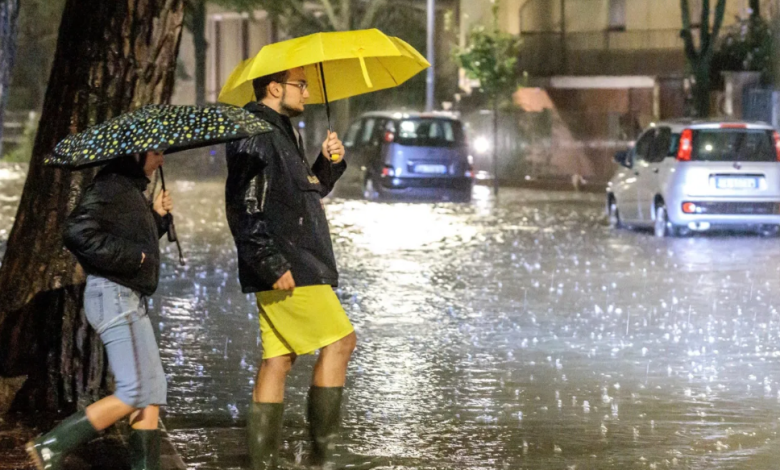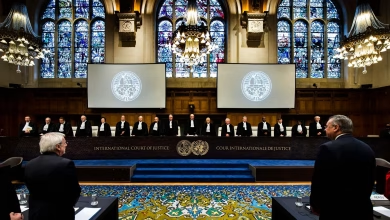Storm Boris Hits Italy After Causing Chaos in Central Europe

- 1,000+ evacuated in Italy's Emilia Romagna
- Severe flooding in Marche region
- 23+ deaths across Poland, Czech Republic, Romania, Austria
- - Hungary's Danube River levels rising
Storm Boris is currently wreaking havoc in the northeastern and central regions of Italy, just days after it caused extensive flooding in central Europe. The powerful storm has led to the evacuation of over 1,000 residents in the northeastern Emilia Romagna region, where authorities are taking urgent measures to ensure public safety.
In the central region of Marche, towns are grappling with severe flooding and significant disruptions to daily life. Fortunately, there have been no reports of casualties thus far. However, the storm’s impact has been substantial, with schools across Emilia Romagna forced to close their doors in response to the adverse weather conditions.
The storm has also caused landslides that have affected several roads, complicating transportation and emergency response efforts. Additionally, railway traffic has faced severe disruptions, leaving many commuters stranded and impacting logistics in the region.
Authorities have issued warnings urging residents to avoid basements and seek refuge on the upper floors of their homes to stay safe from potential flooding. The situation remains fluid as emergency services work to manage the storm’s aftermath and support affected communities.
Schools, libraries and parks were shut in Ravenna, and the University of Bologna cancelled exams and lessons.
The city of Faenza has been the worst-affected, with the levels of the two rivers crossing it rising rapidly overnight.
Residents quoted by local media said they had had to leave their homes in dinghies in the middle of the night. High river levels have also caused the sewage system to overflow.
But authorities in nearby Bologna said on Thursday morning that river levels in the city were under control, although the weather alert is set to continue until Friday for most of the region. Red warnings for flooding and landslides have been issued for eastern Emilia Romagna.
Falconara on the Adriatic coast has seen 204mm (8 inches) of rain since Wednesday, well over September’s average of around 67mm. Over 300mm of rain were recorded over the Apennine mountain region.
The rain will ease through Friday, and the weekend is looking largely dry but as seen in other parts of central Europe, the flooding risk may continue.
For residents of Emilia-Romagna, Storm Boris echoes the severe – and deadly – flooding the region faced just over a year ago.
In May 2023, 13 people died after six months’ rainfall fell in a day and a half, leading to more than 20 rivers bursting their banks.
Tens of thousands of people had to flee their homes and the flooding caused billions of euros of damage.
Italy is the latest country to suffer the fury of Storm Boris – a low pressure system which swept across Poland, the Czech Republic, Romania and Austria, killing at least 23 people.
Although the worst appears to be over across much of the region, the levels of the Danube River are still rising in Hungary. Prime Minister Victor Orban said on Wednesday the water level in Budapest was expected to peak on Saturday afternoon or evening, but that it would be lower than record levels seen in 2013.
The leaders of Poland, the Czech Republic, Slovakia and Austria are due to meet European Commission President Ursula von der Leyen in Wroclaw later today to discuss aid for the flood-hit region.
The city, in southwestern Poland, has also been threatened by high river levels for days.
The recent flooding events in central Europe align with predictions of increased extreme rainfall in a warming climate, although it remains challenging to determine the precise impact of climate change on these specific incidents. Climate scientists have long cautioned that as global temperatures rise, the frequency and intensity of extreme weather events, including heavy rainfall, are likely to increase.
While the exact contribution of climate change to the current weather patterns cannot yet be quantified, researchers have highlighted that warmer air holds more moisture, leading to more intense precipitation. This phenomenon has been linked to the kinds of severe flooding witnessed recently across various regions in central Europe.
As the planet continues to warm, experts stress the importance of addressing climate change and implementing strategies to mitigate its effects. They emphasize that understanding the links between climate change and extreme weather is crucial for developing effective adaptation and resilience measures for communities vulnerable to flooding and other climate-related disasters.
The ongoing discourse among scientists points to a need for further research to better assess the extent of climate change’s influence on specific weather events. However, the patterns observed in recent rainfall episodes reinforce the urgency of tackling climate-related challenges in order to protect lives and infrastructure in the future.






